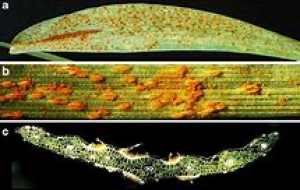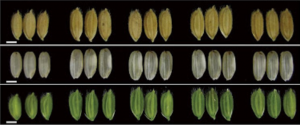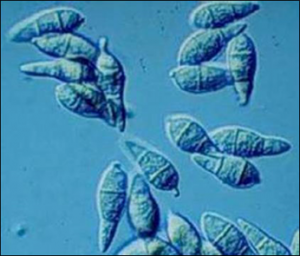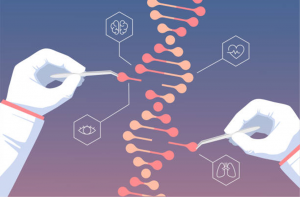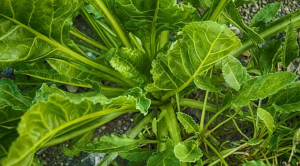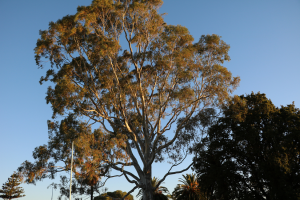Snow mold resistance in winter cereals is an important trait for many countries in the Northern Hemisphere. The disease is caused by at least four complexes of soilborne fungi and oomycetes of which Microdochium nivale and M. majus are among the most common pathogens. They have a broad host range covering all winter and spring cereals and can basically affect all plant growth stages and organs. Their attack leads to a low germination rate, and/or pre- and post-emergence death of seedlings after winter and, depending on largely unknown environmental conditions, also to foot rot, leaf blight, and head blight.
Meiotic recombination plays a crucial role in plant breeding through the creation of new allelic combinations. Therefore, lack of recombination in some genomic regions constitutes a constraint for breeding programmes. In sugar beet, one of the major crops in Europe, recombination occurs mainly in the distal portions of the chromosomes, and so the development of simple approaches to change this pattern is of considerable interest for future breeding and genetics.
Northern corn leaf blight (NCLB) is one of the most devastating leaf pathogens in maize (Zea mays L.). Maize cultivars need to be equipped with broad and stable NCLB resistance to cope with production intensification and climate change. Brazilian germplasm is a great source to increase low NCLB resistance levels in European materials, but little is known about their effect in European environments. To investigate the usefulness of Brazilian germplasm as NCLB resistance donors, we conducted multi-parent QTL mapping, evaluated the potential of marker-assisted selection as well as genome-wide selection of 742 F1-derived DH lines.
The biotrophic rust fungus Puccinia triticina is one of the most important wheat pathogens with the potential to cause yield losses up to 70%. Growing resistant cultivars is the most cost-effective and environmentally friendly way to encounter this problem. The emergence of leaf rust races being virulent against common resistance genes increases the demand for wheat varieties with novel resistances. In the past decade, the use of complex experimental populations, like multiparent advanced generation intercross (MAGIC) populations, has risen and offers great advantages for mapping resistances.
The CRISPR/Cas system exhibits a great potential for rice improvement, but the application was severely hindered due to insufficient target genes, especial the lack of validated genes underlying quantitative trait loci having small effects. In this study, a minor QTL for grain weight, qTGW1.2b, was fine-mapped into a 44.0 kb region using seven sets of near isogenic lines (NILs) developed from the indica rice cross (Zhenshan 97)3/Milyang 46, followed by validation of the causal gene using CRISPR/Cas9-targeted mutagenesis. In the NIL populations, 1000-grain weight of the Zhenshan 97 homozygous lines decreased by 0.9–2.0% compared with the Milyang 46 homozygous lines.
Plant pathogens elaborate the extracellular matrix (ECM) to inhibit host immunity during their interactions with the host. The formation of ECM involves a series of continuous steps of vesicular transport events. To understand how such vesicle trafficking impacts ECM and the virulence in the rice blast fungus Magnaporthe oryzae, we have characterized MoSwa2, a previously identified actin-regulating kinase MoArk1 interacting protein
The rapid development of the CRISPR–Cas9, –Cas12a and –Cas12b genome editing systems has greatly fuelled basic and translational plant research1,2,3,4,5,6. DNA targeting by these Cas nucleases is restricted by their preferred protospacer adjacent motifs (PAMs). The PAM requirement for the most popular Streptococcus pyogenes Cas9 (SpCas9) is NGG (N = A, T, C, G)7, limiting its targeting scope to GC-rich regions. Here, we demonstrate genome editing at relaxed PAM sites in rice (a monocot) and the Dahurian larch (a coniferous tree), using an engineered SpRY Cas9 variant8.
There are two types of fruit of spinach (Spinacia oleracea L.), spiny and spineless, which are visually distinguishable by the spines of fruit coat. In spinach breeding, the fruit characteristic is an important agronomic trait that have impacts on “seed” treatment and mechanized sowing. However, the gene(s) controlling the fruit spiny trait have not been characterized and the genetic mechanism of this trait remained unclear.
We recently reported that a genetic transformation of the RNA-Binding-Protein (McRBP), an RNA chaperone gene derived from common ice plant (Mesembryanthemum crystallinum), alleviated injury and loss of biomass production by salt stress in Eucalyptus camaldulensis in a semi-confined screen house trial. In this study, we assessed the potential environmental impact of the transgenic Eucalyptus in a manner complying with Japanese biosafety regulatory framework required for getting permission for experimental confined field trials.
The mechanical properties of engineering structures continuously weaken during service life because of material fatigue or degradation. By contrast, living organisms are able to strengthen their mechanical properties by regenerating parts of their structures. For example, plants strengthen their cell structures by transforming photosynthesis-produced glucose into stiff polysaccharides. In this work, we realize hybrid materials that use photosynthesis of embedded chloroplasts to remodel their microstructures. These materials can be used to three-dimensionally (3D)-print functional structures, which are endowed with matrix-strengthening and crack healing when exposed to white light.


 Curently online :
Curently online :
 Total visitors :
Total visitors :



